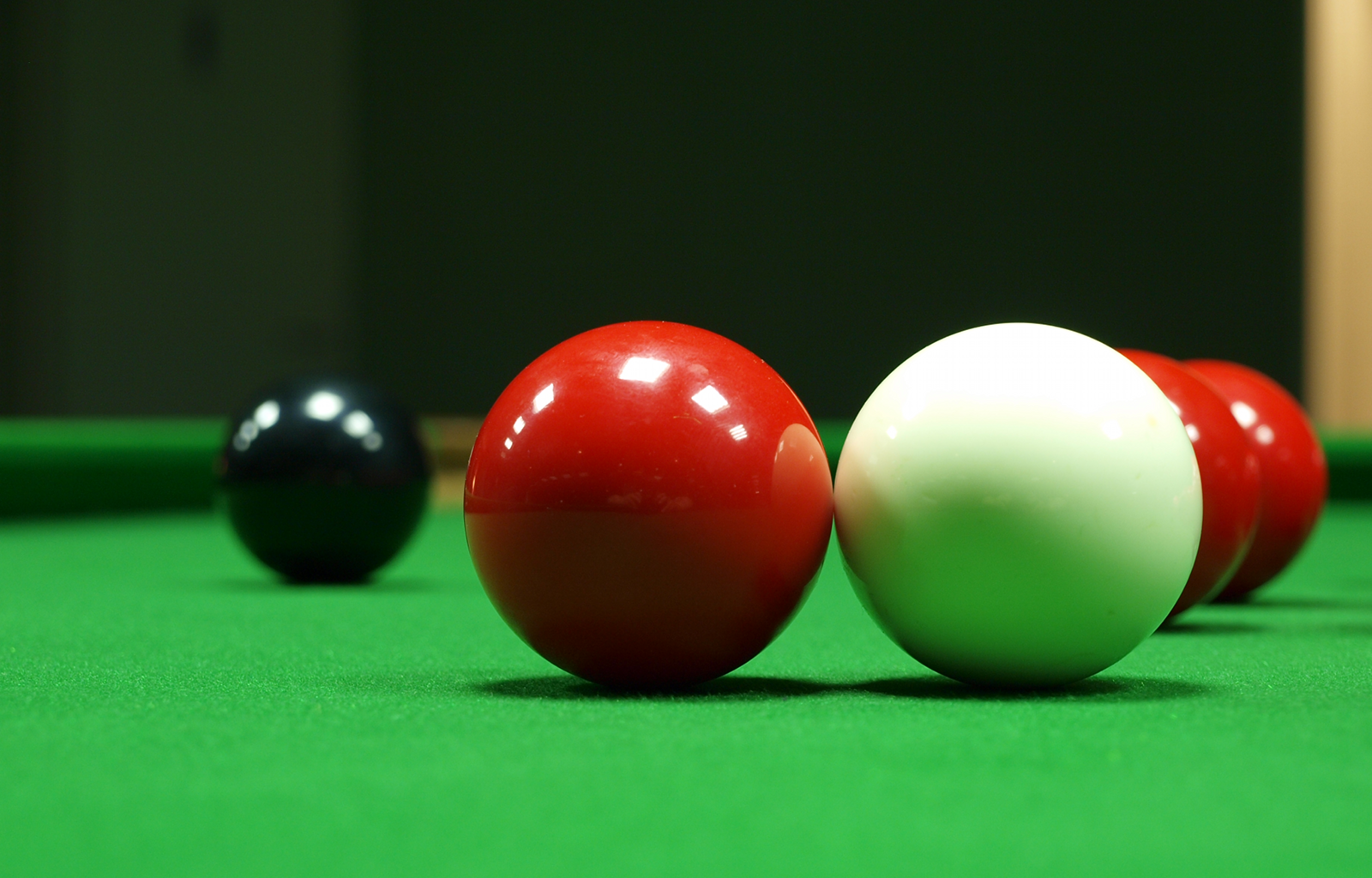Bad contact
A snooker player hits a shot where the cue ball hits the red "full ball" (that means both balls move in the same direction). Both balls have the same mass. The white ball was travelling at 5 m/s, but in the contact, 20% of the kinetic energy was lost. Momentum is conserved. How fast was the red ball moving after the collision?

This section requires Javascript.
You are seeing this because something didn't load right. We suggest you, (a) try
refreshing the page, (b) enabling javascript if it is disabled on your browser and,
finally, (c)
loading the
non-javascript version of this page
. We're sorry about the hassle.
2 . 5 + 4 1 5
This problem can be solved by setting up simultaneous equations for momentum and kinetic energy. Since the masses of both balls are the same, they can be extracted from the equations:
M o m e n t u m = m a s s × v e l o c i t y
K i n e t i c e n e r g y = 2 1 m v 2
v w + v r = 5 (Equation for momentum with the masses removed)
v w 2 + v r 2 = 0 . 8 ∗ 5 2 (Equation for energy with the masses removed)
Rearrange the momentum equation for either velocity (e.g. v w = v r − 5 ) and substitute into the energy equation, giving:
v w 2 + ( v w − 5 ) 2 = 2 0
Expand and rearrange to 2 v w 2 − 1 0 v w − 5 = 0
Solve using the quadratic formula (For a x 2 + b x + c = 0 , x = − b + − 2 a ( b 2 − 4 a c ) )
The two solutions are 2 . 5 + 4 1 5 and 2 . 5 − 4 1 5
These give the velocities of the two balls, with the red being the faster of the two.